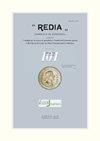四种储粮害虫对白僵菌和绿僵菌菌株的敏感性
IF 0.6
4区 生物学
Q3 ZOOLOGY
引用次数: 1
摘要
虫害被认为是造成储粮巨大经济损失的主要问题之一。实验室进行生物测定,确定市售白僵菌ATCC74040(配方产品:Naturalis®)和绿僵菌cis8对4种储存品害虫的致死率。对4种粮食和豆类害虫(四角螟蛾、斑纹螟蛾、谷物象蛾和苏里南稻瘟虫)的成虫进行了室内试验,分别暴露于3种不同浓度(103、105和107/mL)的昆虫病原真菌菌株中。对不同昆虫种类、菌种和浓度,每天记录7 d的死亡率。测定平均生存时间和最终累积死亡率,建立7天死亡率曲线。昆虫种类、真菌菌株和分生孢子浓度对7 d死亡率曲线和最终累积死亡率有显著影响。平均存活时间随分生孢子浓度变化显著。此外,在所有三个评估参数中,昆虫种类和真菌菌株之间存在显著的相互作用。总的来说,在所有测试浓度下,球孢白僵菌ATCC 74040对所有4种昆虫的死亡率都高于异养白僵菌cis8。本研究结果表明,昆虫病原真菌可以有效地作为综合虫害管理计划的一部分,用于控制豆类和谷物害虫。关键词:昆虫病原真菌;球孢白僵菌;金龟子绿僵菌本文章由计算机程序翻译,如有差异,请以英文原文为准。
SUSCEPTIBILITY OF FOUR STORED-PRODUCT INSECT PESTS TO BEAUVERIA BASSIANA AND METARHIZIUM ANISOPLIAE STRAINS
Insect infestations are considered one of the major problems causing enormous economic losses in stored grains. Laboratory bioassays were performed to establish the mortality induced by the commercially available Beauveria bassiana strain ATCC74040 (formulated product: Naturalis®) and by Metarhizium anisopliae strain CIST8 against four stored products pests. Adults of four grain and legume pest species (Cathartus quadricollis, Callosobruchus maculatus, Sitophilus granarius, and Oryzaephilus surinamensis) were exposed in laboratory assays to three different concentrations (103, 105 and 107/mL) of each entomopathogenic fungal strain. For each insect species, fungal strain and concentration, the mortality was recorded daily over a period of 7 days. Mean survival time and final cumulative mortality were determined, and 7-day mortality curves were established. A significant effect of insect species, fungal strain, and conidial concentration was observed on the 7-day mortality curves and the final cumulative mortality. Also, the mean survival time varied significantly with the conidial concentration. In addition, a significant interaction between insect species and fungal strain was recorded for all three assessed parameters. In general, at all tested concentrations, B. bassiana strain ATCC 74040 caused higher mortality than M. anispliae strain CIST8 in all four insect species. Our results suggest that entomopathogenic fungi could be effectively used as part of an integrated pest management program for the control of legumes and grain pests. Key Words: Entomopathogenic fungi, Beauveria bassiana, Metarhizium anisopliae, stored-products pests
求助全文
通过发布文献求助,成功后即可免费获取论文全文。
去求助
来源期刊

Redia-Giornale Di Zoologia
ZOOLOGY-
CiteScore
1.20
自引率
20.00%
发文量
18
审稿时长
>12 weeks
期刊介绍:
Redia supports its long history of basic and applied research in entomology and invertebrate zoology in the field of crop and forest tree protection responding at the same time to the increasing need of innovation and technological improvement.
 求助内容:
求助内容: 应助结果提醒方式:
应助结果提醒方式:


